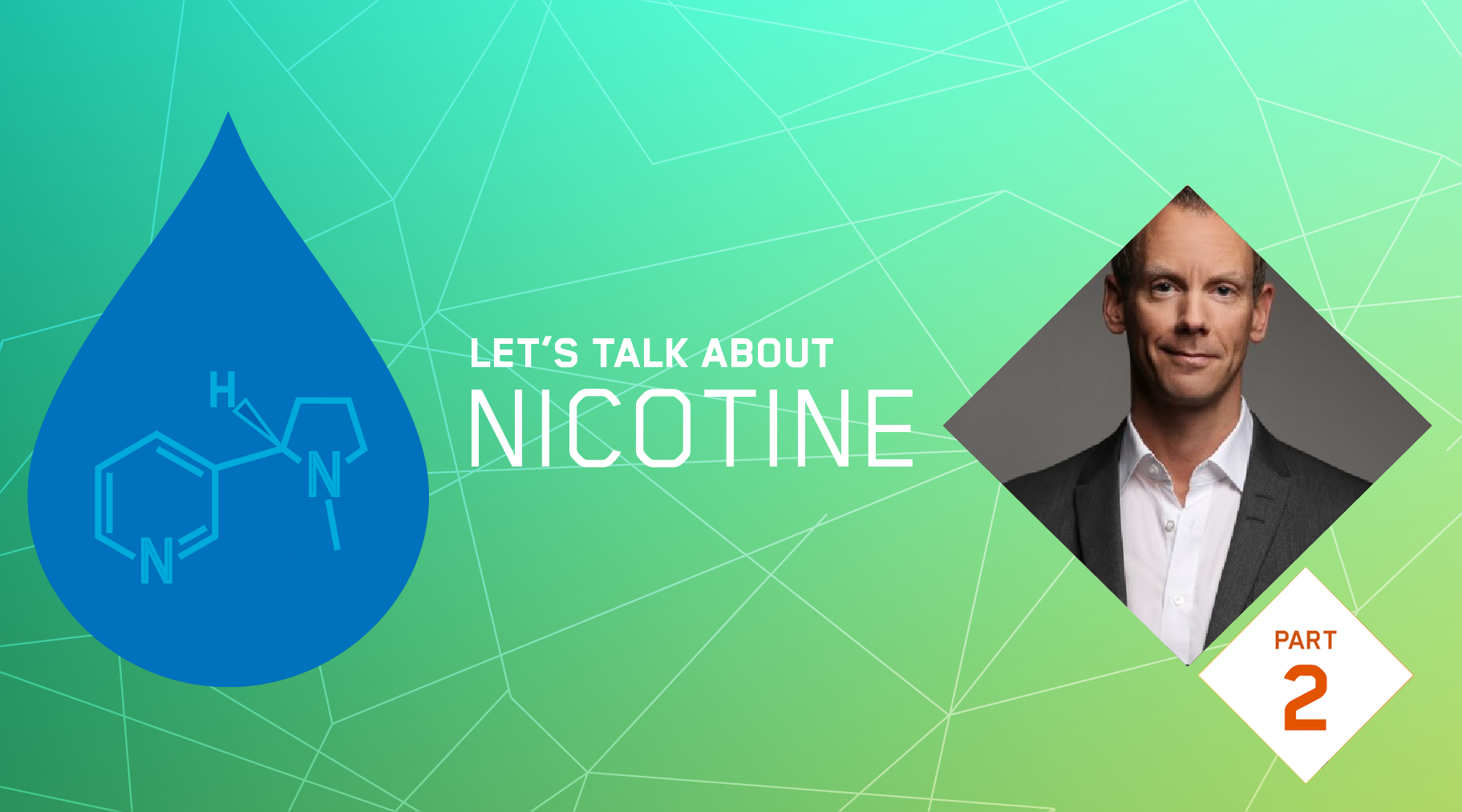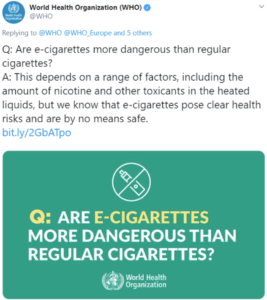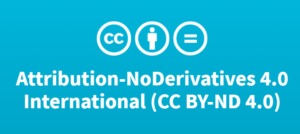
But there’s a problem – regulators, public health bodies and even some scientific organisations have made it extremely difficult for industry to engage in this discussion… and it seems the situation is only getting worse.
For instance, until a few years ago we used the US-based science newswire EurekAlert! to publish press releases about our NGP research. Following its acquisition by the American Association for the Advancement of Science (AAAS), they promptly banned any submissions from the tobacco and alcohol industries – despite the only science we published on EurekAlert! consisting of peer-reviewed tobacco harm reduction research in the academic literature.
It was sadly a similar story in 2021 when the Society for Research on Nicotine and Tobacco (SRNT) disappointingly decided not to permit tobacco manufacturers to attend their future conferences.

It’s clearly becoming increasingly challenging to communicate about potentially harm reduced NGP or educate people about nicotine.
Our question to regulators is this: when responsible companies like Imperial are trying to make a meaningful contribution to tobacco harm reduction in a highly regulated industry, how do we go about engaging in these discussions with stakeholders, including regulators, public health authorities, and even consumers?
In our opinion, transparent and rigorous science and high product standards remain key to creating effective, potentially harm reduced alternatives to cigarettes that are trusted and used by adult smokers. Moreso, the ability to engage in these discussions is imperative.
Which raises another point.
The overwhelming weight of many thousands of pieces of scientific research points to the exciting public health potential of nicotine-containing NGP. However, it’s likely there will always be some small or poorly conducted studies that contradict these findings, and these contradictory papers appear most likely to be reported on by media outlets, particularly by those who might be less concerned with validating said research and thrive on controversy to generate engagement.
The EVALI[i] vaping product use-associated lung injury incident is a prime example, where a glut of factually incorrect and over-zealous reporting undoubtedly contributed to a measurable impact on global consumer confidence in vaping. Similarly, the long-dispelled ‘popcorn lung’ myth continues to re-surface in the media with depressing regularity.
Imperial remains committed to playing our part in helping to correct misperceptions and misinformation whenever the opportunities arise, as there’s little doubt a marked lack of rigour in much of the reporting in these areas has had a measurable impact on consumer confidence in NGP in recent years.
So, how do consumers form solid perspectives based on all this misinformation? Clearly, they can’t – and the reality is most NGP users reading these stories aren’t simply going to quit using nicotine products. More likely, they’ll simply return to smoking cigarettes. Any adult smokers who haven’t yet tried NGP will also be deterred. Both are potential public health disasters.

Unhelpful or contrary regulation and legislation may also be inspired by these same misperceptions.
For instance, a Gallup poll in August 2022 suggested that, inspired by its recreational legalisation in many states, regular cannabis usage has surpassed cigarette use in the US for the first time on record. Meanwhile, in Germany, recreational cannabis – which is most commonly consumed via smoking – has been legalised, while smoking-related regulations inexorably increase.
How is any of the above helping to facilitate THR and educate consumers that it’s the many other harmful chemicals in smoke – whether that smoke comes from burning tobacco or cannabis – and not nicotine that’s primarily responsible for smoking-related disease?
If anything, it’s having the opposite effect.
Perhaps the most curious development of all was the US FDA’s decision in 2019 to grant a PMTA to low-nicotine cigarettes, even though – again – they produce the same amount of harmful smoke as any other cigarette.
Misperceptions around this category (a study claimed almost half of adult smokers believe that continued smoking of low-nicotine cigarettes is less likely to cause cancer than smoking their current cigarettes) could contribute to increases in smoking related disease as adult smokers seeking potential harm reduction mistakenly turn to them instead of NGP.
Low-nicotine cigarettes are completely contrary to the THR scientific evidence-base and are only going to drive even more confusion around nicotine and its relationship with tobacco and smoking-related disease, creating more barriers than they break down.
Despite the missteps, we believe if we can address misperceptions and follow the lead of countries like the UK, Japan and Sweden in applying risk-proportionate legislative frameworks for high quality NGP based on demonstrable science like the relative risk scale, we’ll go a long way to helping facilitate THR.
This, in the future, will potentially have a seismic impact on global public health.
As a natural consequence, the increasing global prevalence of NGP and their potential ability to deliver nicotine in a significantly harm reduced manner might then begin impact broader societal perceptions of nicotine, helping to re-frame it in a more positive light.
That’s an optimistic view, but it fails to acknowledge the final elephant in the room.
It’s this: while some scientists are supportive, many prominent public health and legislative bodies simply don’t appear to have any interest in consumers using nicotine – even if it means those same consumers would not smoke.
In fact, it’s the opposite – they want to ban it.
The roots of the burgeoning anti-nicotine lobby can be traced back to former U.S. Surgeon General C. Everett Koop, who likened its addictive qualities to heroin or cocaine.
In recent years, we would argue the highest profile public health body in the world – the WHO – has subtly shifted its stance from anti-smoking to anti-nicotine, as evidenced at the recent COP in Panama.

Meanwhile, the EU Commission registered a European Citizen’s Initiative to ‘achieve the first European tobacco-free generation by 2030.’ However, their proposed legislation bans the sale of not simply tobacco but all nicotine products to people born in or after 2010 – be it high risk/harm cigarettes or lower risk/harm NGP. The focus should be to get people to stop smoking, even if it means that they continue to use nicotine in ways that most scientists believe probably pose less risk.
Achieving THR via NGP surely represents the EU’s greatest chance of achieving their smoke-free goal, so banning all nicotine products seems counterproductive.
Finally, having already banned snus, Finnish regulatory eyes are now turning towards the country’s growing tobacco-free OND prevalence. They aspire to phase out all tobacco and nicotine products by 2030.
These are obviously potential extinction-level events for nicotine, but they beg the question: if tobacco smoke has been long-proven to be the villain of the piece, why pursue nicotine with such zeal?
Is ‘normalising’ nicotine, provided it’s through potentially significantly harm reduced product categories, such a bad thing?
After all, if nicotine can be decoupled from cigarette smoking and instead delivered with minimal harm and little dependency potential through future products at a population level, what’s wrong with informed and consenting adult[ii] members of society being able to enjoy its pleasurable stimulative effects? (Nicotine has other perceived benefits too, find out more in this infographic.)
Yet if, behind closed doors, the WHO has definitively – and unfairly – decided all tobacco manufacturers are irredeemably unscrupulous and nicotine should be banned, it’s going to be an uphill fight to prevent this occurring at some point in the future.
But we absolutely need to continue to try.
A Fresh Start?
We therefore propose the following positive steps to hopefully begin to build consensus:
We believe if we’re able to help achieve even a fraction of the above, the most exciting and rewarding outcome will likely be vastly improved health outcomes for the millions of adult smokers around the globe.
If, along the way, we also succeed in rehabilitating nicotine, it’ll be a huge bonus and an exciting opportunity to explore a chemical that has proven qualities in helping adult consumers enjoy precious and deserved moments of relaxation and pleasure throughout their busy lives.
Follow us on LinkedIn and read more about our intentions to help create potentially healthier futures for our consumers on our corporate website. You are free to share this content with credit to Imperial Brands under a Creative Commons Attribution-NoDerivatives 4.0 International (CC BY-ND 4.0) license.

[i] Vitamin E acetate was strongly linked to the EVALI outbreak after being found in product and patient samples tested by the US Food and Drug Administration and US Centres for Disease Control and Prevention. While the evidence wasn’t sufficient to fully rule out the contribution of other chemicals of concern, a proliferation of black-market cannabis vaping products was likely to blame.
[ii] It’s important to acknowledge that nicotine is an addictive chemical, is toxic at high doses and that exposure during adolescence may have lasting adverse consequences for brain development. In pregnant females, it may also lead to adverse effects on foetal brain development, as well as increasing the likelihood of preterm delivery and stillbirth. As a responsible manufacturer, we’re clear about the audiences our products are intended for, and committed to minimising their consumption by unintended users.